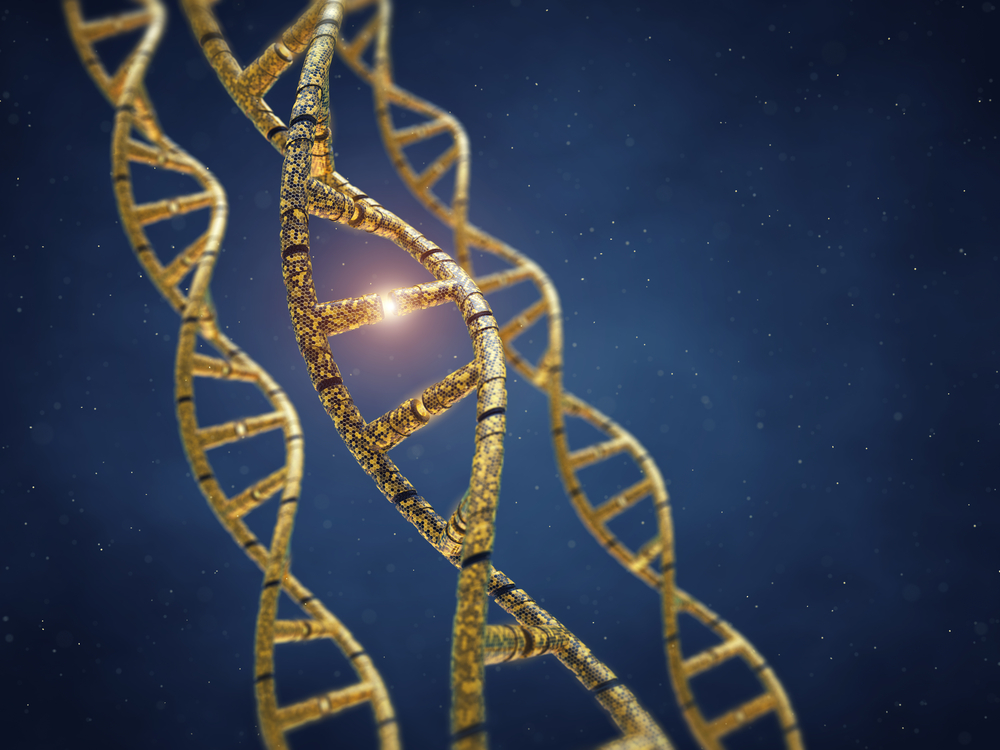PISD is a Novel Mitochondrial Disease Gene, Case Report Shows

Mutations in the PISD gene can cause mitochondrial disease, a new study shows.
The report, “PISD is a mitochondrial disease gene causing skeletal dysplasia, cataracts and white matter changes,” appeared in the journal bioRxiv.
Classic mitochondrial disease is caused by dysfunctional energy production, and symptoms usually occur in organs that require lots of energy such as the heart, muscle, brain, and eyes.
More recently, researchers have discovered an atypical type of mitochondrial disease, known as mitochondrial chaperonopathies. These are caused by impaired balance of mitochondrial proteins.
Patients with such mitochondrial chaperonopathies are characterized by atypical skeletal and facial features not usually seen in patients with classic mitochondrial disease. They also have more classic symptoms of the disease, such as cataracts and an impaired central nervous system.
To date, only three genes – LONP1, HSPA9, and AIFM1 – have been linked to skeletal abnormalities in the context of mitochondrial disease.
Therefore, maintaining mitochondrial protein balance is a key aspect of regulating mitochondrial function, in order to prevent disease.
Notably, many mitochondrial enzymes are bound to the inner mitochondrial membrane (IMM) – one of the two membranes of the mitochondria. The IMM is made up of various lipids, so it isn’t surprising that the IMM lipid composition is an important regulator of mitochondrial function.
The PISD gene provides instructions to make a mitochondria enzyme that converts the molecule phosphatidylserine (PS) to phosphatidylethanolamine (PE), both fatty substances, in the IMM. PE comprises 15 to 25 percent of the cellular membranes, providing membrane curvature.
In this study, researchers discovered that mutations in the PISD gene can cause mitochondrial chaperonopathies.
Physicians describe the case of a 28-year-old woman who had cataracts in the first few months of life. She was also found to have mild developmental delay, recurrent respiratory infections and short stature at the age of 3.
A skeletal survey done at 8 years of age was non-diagnostic, with several abnormal findings such as shortening of the fingers and toes, delayed bone age, and flattened chest bones. All these suggested genetic or metabolic syndrome.
At age 18, the patient had a distinctive facial appearance with a depressed nasal ridge and midface hypoplasia – a condition in which the upper jaw, cheekbones and eye sockets have not grown as much as the rest of the face. She also experienced progressive hearing loss.
The patient’s younger sister followed a remarkably similar course, with similar skeletal and craniofacial manifestations, hearing loss and cataracts. The presence of such similarities between the two sisters suggested that it was a genetic disorder.
Physicians then conducted exome sequencing and found mutations in the PISD gene. These mutations were linked to decreased conversion of PS to PE, and a reduction of total cellular PE levels in patient-derived cells.
Furthermore, patient-derived cells exhibited significant indicators of mitochondrial dysfunction such as more fragmented mitochondrial networks and decreased oxygen consumption rates.
Treatment with lyso-PE, which can replenish the mitochondrial pool of PE, restored mitochondrial shape in patient fibroblasts.
“These findings demonstrate that PISD is a novel mitochondrial disease gene,” researchers wrote. “The addition of PISD to the list of genes mutated in mitochondrial chaperonopathies will help define a better mechanistic understanding of this recently appreciated class of mitochondrial disease.”






